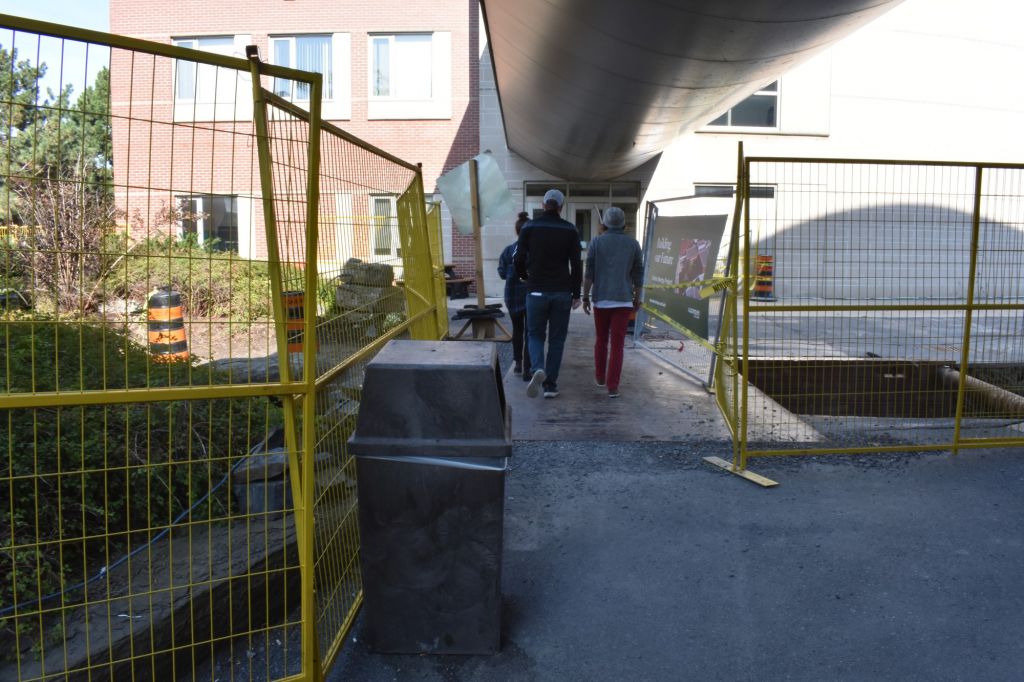Students and staff noticing the construction around J, T and N buildings may be surprised to learn all those holes and piles of dirt have a cool — or hot — purpose for the school.
The construction from the Energy Savings Contract (ESCO2) Algonquin College made with Siemens Canada in 2013 is expected to be completed and operational by the end of 2018. This $52 million multi-phase project is decreasing the use of energy on the Woodroffe campus, which means the cost of maintenance fees for the college will be lowered.
The fourth and final phase of the project includes the installation of four pipeline network extensions happening in the courtyard between Market Place Food Court and buildings J, T and N. The cost of this final phase is roughly $4 million.
The pipelines will provide heat and cooling to buildings J, N, T, P and S. It all comes from waste heat generated by two co-generation (co-gen) engines, located between the A and C-building, that are producing power to the entire college.
“We are able to produce our own energy on site with natural gas. It’s actually cheaper to produce our own energy by burning natural gas in our co-gens than it is to pay for energy off of the grid,” said director of physical resources Todd Schonewille.
Once the entire project is completed, the college is expected to save about $3.5 million each year, Schonewille said. With less school operation costs, the hopes are to lower other expenses for students including the cost of tuition and other school services.
The college funded the project by taking out a loan that will be paid back with the money saved on energy over the next 20 years. Savings are already being realized through the first three phases of the project but the fully estimated $3.5 million saved will be realized over the next year and a half.
It’s the biggest energy-saving project the college has ever taken on, Schonewille said this cutting-edge project is the first of its size done by any college in Ontario.
Though this project will have a positive effect in the long run, the short-term disturbances are definitely noticed.
“Every time I’m on air you can hear construction in the background,” said second-year radio broadcasting student Amy Hannah. “I don’t remember a time at Algonquin when there wasn’t construction; there was always something in the building or something going on outside,” said Hannah. Many of the broadcasting student’s classes are held in the N-building which is right beside the latest construction zone.
Dan Mellon, a professor in the radio broadcasting program, said he has also noticed the noise from the construction site and sometimes his students arrive late to class due to the construction between buildings.
But, he remains understanding, knowing the circumstances are temporary and that the end result will be beneficial to the college.
“It’s been extremely disruptive for the college. We’re digging things up, we’re closing courtyards, we’re closing roads and parking lots for periods of time. We like to say that we’re thankful to our students, our staff and our visitors for being understanding for these types of disruptions that come with these projects.”
Though it has been a long and disruptive process, he believes the benefits will be worth it for the future of the college and its students.
As he puts it, “it’s short-term pain, for long-term gain.”


